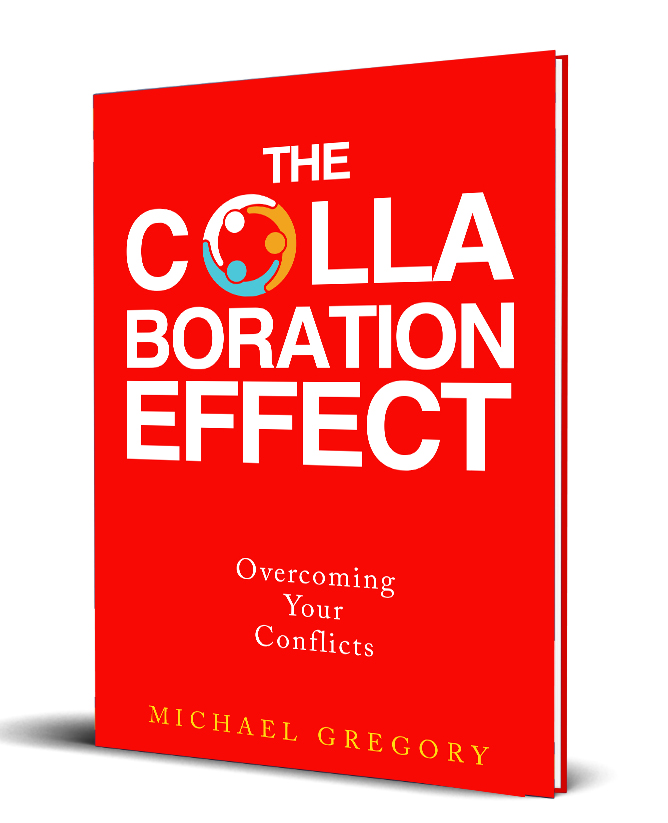
Over the last few years the U.S. Tax Court has been experimenting with “hot tubbing” experts [concurrent witness testimony] on cases so that the U.S. Tax Court Judge can informally sit with the experts and ask questions. This allows the experts to offer their own commentary and help the judge to understand many of the complexities in lay language while answering the judge’s questions. This is done without attorneys interrupting or objecting. The attorneys are in attendance and listen to the dialogue. The commentary that follows considers an application of The Collaboration Effect TM to this situation.
Background with Judge Laro
Judge Laro was a U.S. Tax Court Judge that pioneered this process in the U.S. Tax Court. This was introduced in the literature in a 2014 article
“Hot tubbing is an alternate way to handle cross-examination of expert witnesses. In our system, he explained, the parties retain experts to teach the fact-finder and the court (sometimes the same) about valuation and other issues that require specialized knowledge; but, the judge points out, think of what the expert’s testimony looks like to a judge after the opposing counsel has put the expert through cross-examination, as our adversarial model requires. The testimony is fragmented because of the sustained attack on the expert’s credibility.
The solution to a more equitable outcome, he said, is a technique practiced in a number of other countries known as hot tubbing or, more formally, “concurrent witness testimony.” Judge Laro, who has used it in a few cases, says he usually sits at a table with the two experts flanking him and the attorneys relegated to the periphery. The judge opens a conversation, asks questions of the experts, and invites them to pursue their own dialogue. Without having to worry about attacks on their credibility, the experts are able to have a collegial discussion about their work on the case.”[1]
Is this a good idea?
There are pros and cons to the approach as the attorneys sit behind the experts and judge. The attorneys listen, while the experts share their expertise and answer the judge’s questions. In U.S. Tax Court one of the keys to the trial is for the experts to be accepted by the court and for the experts to relate to the judge. Trials are relatively brief.
The ultimate key is the brief written after the trial by the attorneys for each side followed by reply briefs to refute the brief by the other side.
The experts need to be involved in this process. The judge uses the expert reports as testimony, their limited testimony at trial, the briefs and the reply briefs to ultimately develop an opinion to be published at some later date.
The Tax Court has employed this technique in several cases, most recently in Green Gas Delaware Statutory Trust v. Commissioner, 147 T.C. No. 1 (July 14, 2016). In that case, the court noted the prior use of hot tubbing in three prior memorandum opinions and observed that it found hot tubbing beneficial, particularly in cases involving technical issues related to a relatively new industry. It explained that hot tubbing allowed the parties’ experts to openly discuss their differences and bring their positions closer together, ultimately for the benefit for the judge.[2]
The Collaboration Effect TM consideration
The Collaboration Effect TM is all about connecting relationships, actively listening, educating judiciously and negotiating closure. So how can this be applied to hot tubbing?
Connecting relationships
Jude Laro warned against writing a report specifically for the judge. However, he stated,
“He also thought it was good practice for an expert to read the cases in which a presiding judge discussed valuation issues to get a picture of where the judge is coming from, but it would be a mistake to tailor a valuation to the judge. What matters is the expert’s independent, unbiased opinion. How did he or she arrive at it? Can he or she back it up?”[3]
A prudent practice would be to learn as much about the judge as possible on both a personable side as well as how the judge addressed similar technical issues, and look for ways to connect.
Based on the background of the judge it would be important for the “hot tubbing” expert to appeal to the interests of the judge.
If a technical technique is being offered by the expert that the judge has had concerns with previously, the expert needs to be particularly sensitive to this approach.
One alternative is to not use the technique as this may irritate the judge. The other is to use the technique but then to take additional steps to educate the judge as to why it is applicable in particular in this case.
An example of this is using the Pre-IPO studies to determine a Discount for Lack of Marketability when an Initial Public Offering (IPO) is not an expectation. There are six court cases with six different tax court judges that have indicated how this technique can be manipulated depending on the time frame assumed of when the IPO may take place by the expert.
Actively listening
An expert would want to pay particular attention to the questions asked by the judge during the process paying attention not only to the words, but also to the tone of the words as well as the body language and facial expressions of the judge.
To educate judiciously it is very important for the expert to truly be an expert and be knowledgeable of the subject material. That is a given, but it is also extremely important for the expert to be able to inform the judge in terms the judge can understand. The expert should be straightforward demonstrating integrity and honesty, in a professional, friendly and knowledgeable open manner with transparency.
The expert wants the judge to appreciate the expert, trust the expert technically and interpersonally and if it all possible to really connect with the judge.
Ancillary comments from a recent case
In a recent case before the U.S. Tax Court, I met with an expert before the expert testified before a U.S. Tax Court Judge who used the hot tubing technique. I also had the opportunity to speak with the individual after hot tubbing before the judge. It went well. The judge estimated the hot tubbing would take about 20 minutes. However, given the interpersonal connections and the judge’s follow up questions, it lasted about an hour. It was amenable, professional and an interesting experience for the expert. The attorneys stayed in the background during the hot tubbing session without interruption.
Lessons learned
Hot tubbing indeed can help a judge to make a more informed decision by ensuring that the judge has been able to address all of the court’s concerns during the process. It also allows the judge to connect with the experts to more thoroughly relate and evaluate their technical skills while connecting at an interpersonal level.
It pays for the experts to try to connect with the judge, actively listen and to judiciously educate the judge.
This should allow the judge to make a more informed and educated decision. The expert is not there to be an advocate for their client, and contrary to some opinions I believe not to be an advocate for their expert opinion. Rather, I believe the expert is there to educate the judge on what was done and why, so that the judge can decide how to make the final determination. The decision is based on the facts in the case and the application of the law to those facts.
About the author
Mike Gregory is an expert on conflict resolution business to government (IRS), business to business, and within businesses. Mike is an international speaker and he has written 11 books including Business Valuations and the IRS: Five Books in One, The Servant Manager and Peaceful Resolutions. Mike may be contacted directly at mg@mikegreg.com and at (651) 633-5311. [Michael Gregory, ASA, CVA, NSA, MBA, Qualified Mediator with the Minnesota Supreme Court]
About the author
Mike Gregory is a professional speaker, an author, and a mediator. You may contact Mike directly at mg@mikegreg.com and at (651) 633-5311. Mike has written 12 books (and co-authored two others) including his latest book, The Collaboration Effect: Overcoming Your Conflicts, and The Servant Manager, Business Valuations and the IRS, and Peaceful Resolutions that you may find helpful. [Michael Gregory, ASA, CVA, MBA, Qualified Mediator with the Minnesota Supreme Court]

